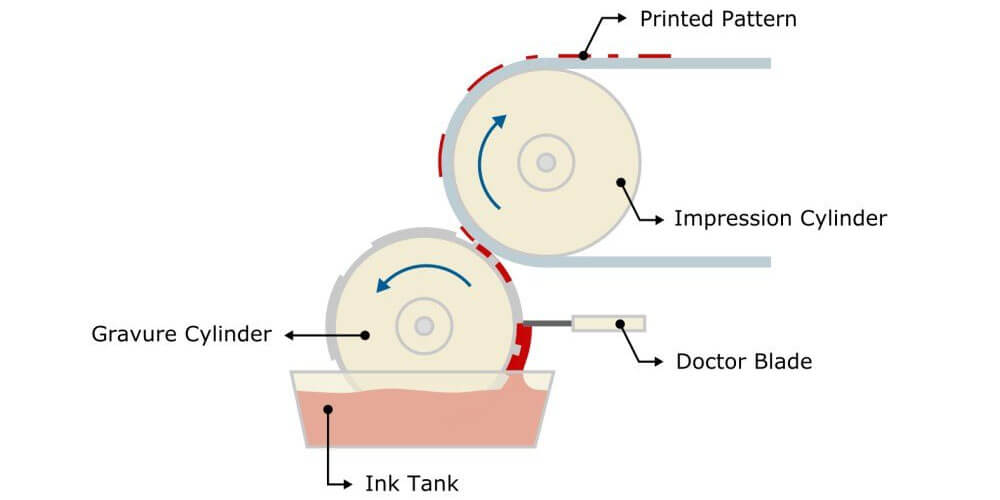Gravure printing is short for Rotogravure printing. It is a printing method that uses acid-etching onto a copper-plated cylinder filled with ink. The plated cylinder is then placed in contact with paper using impression rolls. The ink is transferred to make the required image on the page of the paper. Gravure printing is used when the production company has a lot of printing to do. The resulting printed images have vibrant and intense color spectrums that clients love. If you are thinking of using Gravure printing, let us help you decide if it’s best for you by discussing this technique’s pros and cons.
Pros
1. High-Quality Printing
Gravure printing produces high-quality prints in large quantities, making it the perfect tool for printing large printing runs. If you are looking to do your printing in the shortest time possible, then rotogravure printing is the technique for you. It takes the shortest time to print with the fastest production speed recorded.
2. Long-lasting Plated Cylinder
The plated cylinder used in gravure printing lasts long, mostly lasting through entire printing runs without losing vitality. This means that the cylinders produce even, good quality print throughout production. Your last print will be just as good as the first print.
3. Economical Printing
Gravure printing is economical because it uses less ink than other printing techniques. It is impressive how the technique is fast, produces high-quality images, yet uses the least amount of ink. Gravure printing is suitable for thin materials. It is used to print materials like gift wraps, wallpaper, and posters made of light paper.
4. Improved Versatility
Gravure printing also provides the most versatile range of colors for your prints. For the best continuous tones, gravure printing is the best for consistent, high-quality colors. For fast, high-quality, and affordable printing of a large number of pages, Gravure is the way to go.
Cons
Disadvantageous on short run printing
Gravure printing is not suitable for shorter printing runs. This is because it requires a large number of cylinders to get multiple colors printed out. The cylinders also take time to be put up for production, which is only worth it when printing large orders. So it would make little to no economic sense in short-run printings. For this technique to be carried out without a glitch, employees must continually inspect and clean the machines.
An exciting variation of Rotogravure printing is photogravure. Rotogravure printing is not an alternative for anyone looking to print in low volumes. Instead of carving the cylinders to get the image, photogravure carves the images out onto copper sheets; then, they are wrapped around the cylinders. This method is faster than rotogravure but still provides the same quality images.
Conclusion
Repeat printing in large quantities is best done with the Gravure printing technique. It takes time to set up the printing copper cylinders, but the fast printing speed quickly recovers the time. Rotogravure printing consistently produces high-quality print images trough out the printing runs. An excellent example of fast gravure printing is in newspaper printing. Similarly, if you want to produce packaging for your product, Gravure is the way to go because it will save you time and money. Gravure printing uses less ink to print, which makes a significant difference in production’s overall cost.

